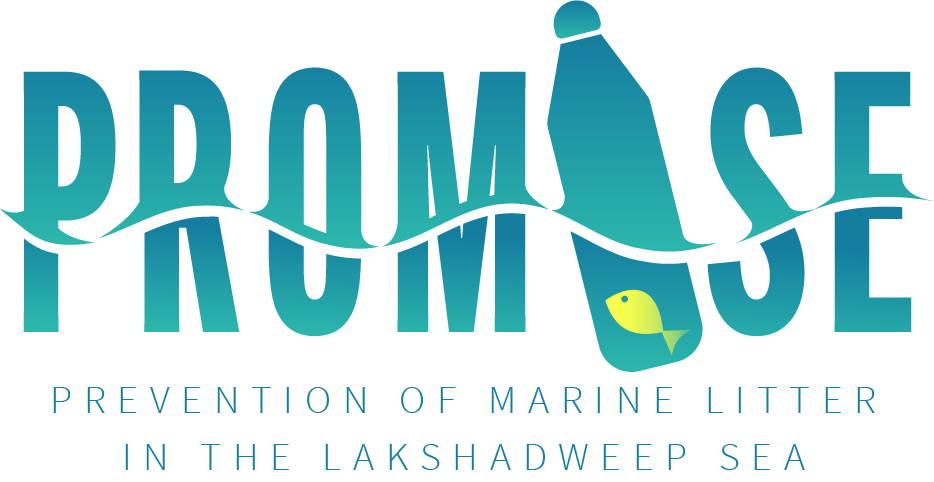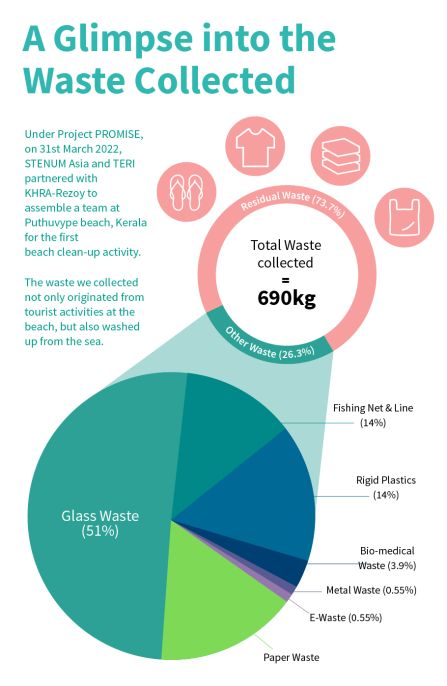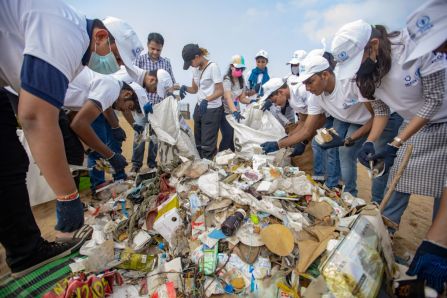INDIA: First Beach Clean-Up at Puthuvype, Kerala under Project PROMISE
| Date |
Date
|
On 31st March 2022, the first beach clean-up activity under PROMISE Project took place successfully thanks to the nearly 200 enthusiastic volunteers from four colleges - SCMS Management, SCMS Kalamassery, SCMS Architecture and MES Marampally. The beach clean-up efforts were coordinated by STENUM Asia and TERI (Project PROMISE consortium partners) with the local support of KHRA-Rezoy at Puthuvype beach, Kerala to tackle the problem of marine litter. Mr. K Chandra N Pillai, the Chairman of Greater Cochin Development Authority (GCDA) was the chief guest and delivered a welcome speech promoting Project PROMISE’s goal of preventing marine litter on beaches. He ensured that support will be provided from GCDA as well. He also encouraged the volunteers to take this opportunity as a practical learning experience that will instil a good attitude towards living more sustainably. The volunteers were then briefed by the STENUM Asia team about the safety and waste-picking protocol to be followed.
The volunteers collected 690 kg of waste which was segregated into seven different types - rigid plastics, bio-medical waste, hazardous waste (electronic waste), broken glass waste, metal waste, paper waste and miscellaneous waste (including footwear, clothing, and residual waste).

The top marine litter items found at Puthvype beach by the beach clean-up volunteers were:
- Footwear
- Glass bottles
- Paper cups
- Plastic packaging (Crisps, sweets, ice cream wrappers)
- Thermocol
- Fishing net and line
The variability in the types of wastes found near both collection points give us an informative insight into identification of the various kinds of commercial and recreational activities at the beach.
The collection point (CP1) near the entry of the beach had accumulated 24kg of paper waste which included paper plates, paper cups and so on. The entry point is home is several food vendors and it could be assumed that the amount of paper littering observed at this part of the beach was mainly due to littering by tourists and from the lack of waste bins set around these vendors.

Meanwhile, the second collection point (CP2) was set up away from the food stalls and further into the length of the beach. The major types of waste collected a CP2 were shoes, thermocol and glass waste. The shoes may have gotten washed away when the tourists and locals went into the water, at this beach or elsewhere and washed up on shore when the tide comes back in. The other types of wastes collected here were mainly thermocol which is used in the fishing nets to keep them afloat.
The glass waste collected mainly consisted of glass bottles which may have washed up from the sea or might have been littered onto the beach by the tourists and locals.
The recyclable items collected by the volunteers were sent for closed loop recycling.
Learning from the first beach clean-up has equipped the STENUM Asia and TERI team with better practical insight on how to execute further clean-ups more efficiently in order to achieve Prevention of Marine Litter in the Lakshadweep Sea from land sources. The event was the first of many beach clean-ups in Kerala, India that will also help spread more awareness about this pressing issue of marine litter in our water bodies that need to be addressed.




